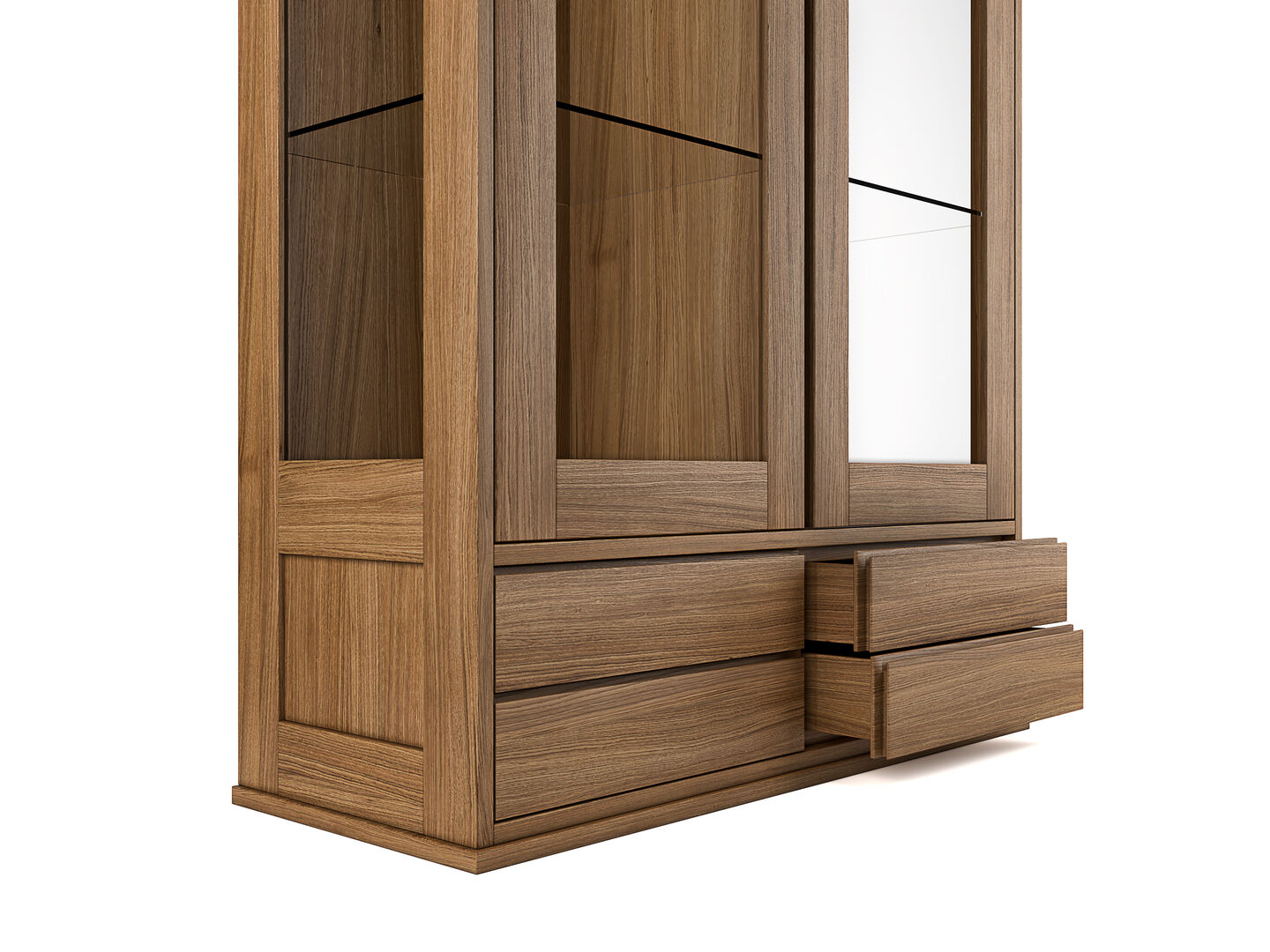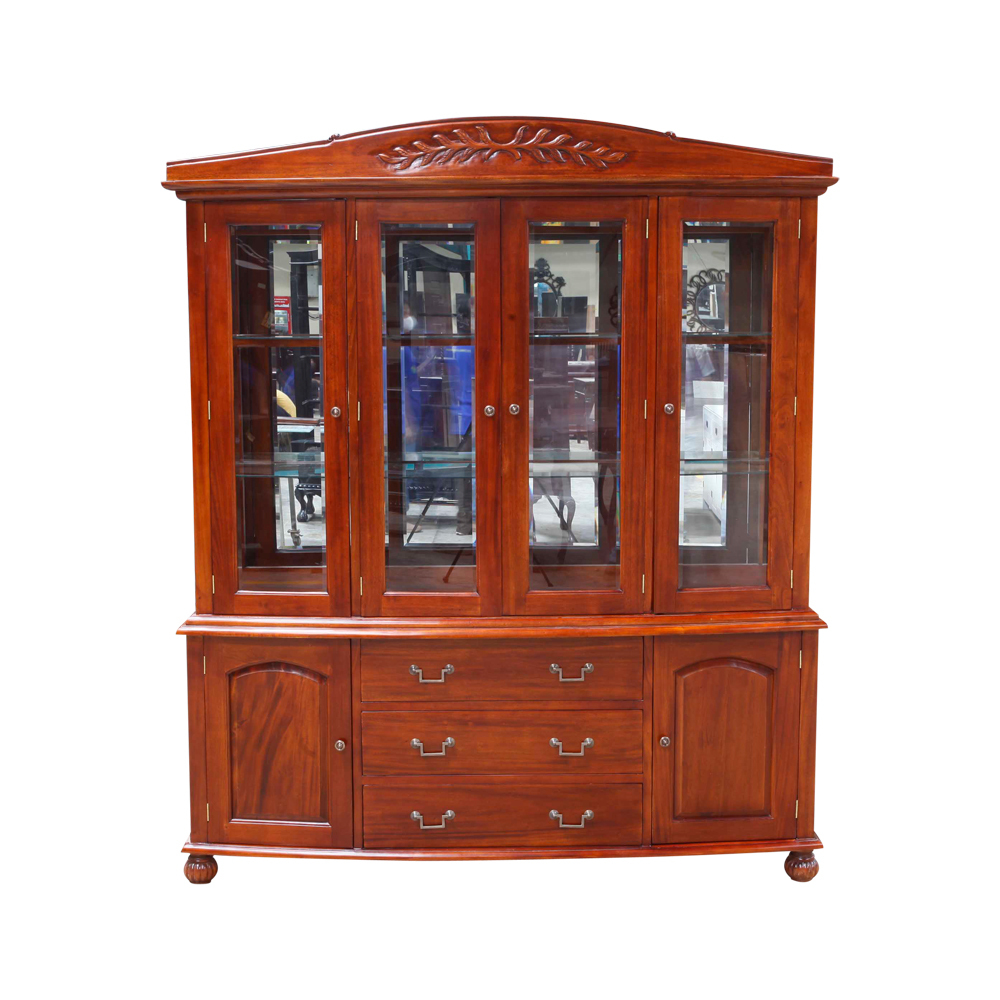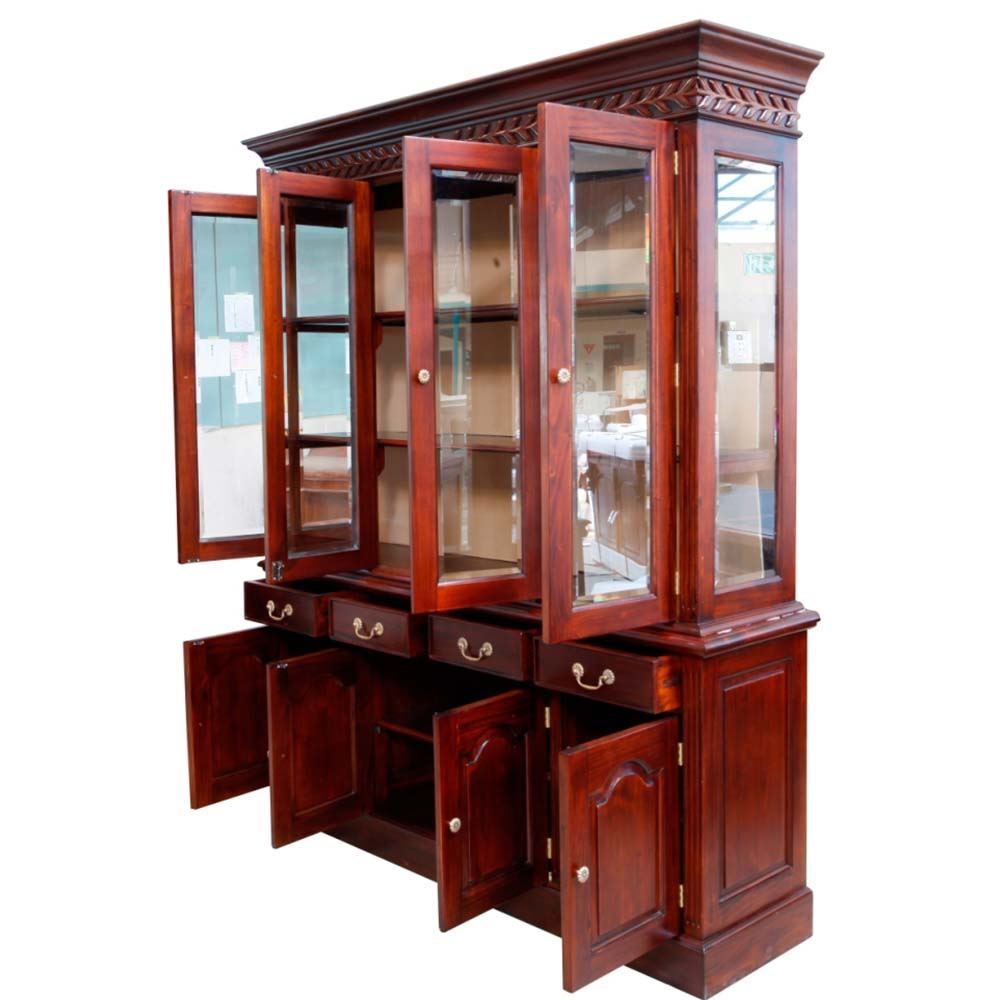Solid Wood Sideboard Cabinet: A Timeless Choice

The allure of solid wood furniture transcends fleeting trends, resonating with a timeless appeal that speaks to generations. Its enduring charm lies in the harmonious blend of durability, craftsmanship, and natural beauty. These qualities elevate a solid wood sideboard beyond a mere storage solution, transforming it into a cherished centerpiece that enriches the aesthetic and value of any room.
Solid Wood: A Legacy of Durability and Craftsmanship
Solid wood furniture embodies a legacy of craftsmanship and enduring quality. The inherent strength and resilience of wood provide a robust foundation, capable of withstanding the test of time. Each piece is meticulously crafted, showcasing the artistry and skill of skilled artisans who transform raw materials into enduring works of art.
“Solid wood furniture is an investment that appreciates with age, becoming a treasured heirloom passed down through generations.”
The natural grain patterns and textures of wood add a unique character to each piece, making it a one-of-a-kind creation. The warmth and richness of solid wood furniture create a sense of comfort and elegance, enhancing the ambiance of any space.
Popular Wood Types for Sideboards
The choice of wood for a sideboard can significantly influence its aesthetic and character.
The following list highlights popular wood types used in sideboard construction, detailing their unique characteristics and suitability for different styles:
- Oak: Known for its strength, durability, and distinctive grain patterns, oak is a classic choice for sideboards. Its warm, golden tones and rich character lend themselves to traditional and contemporary styles. Oak sideboards exude a timeless elegance that complements a wide range of interior design schemes.
- Walnut: Walnut boasts a rich, dark brown hue with intricate grain patterns, adding a touch of sophistication to any room. Its natural oils provide a beautiful patina over time, enhancing its character. Walnut sideboards are often favored for their elegance and luxurious appeal.
- Cherry: Cherry wood is prized for its warm, reddish-brown tones and subtle grain patterns. It ages gracefully, developing a rich patina that adds depth and character over time. Cherry sideboards exude a sense of warmth and sophistication, complementing both traditional and modern styles.
- Mahogany: Mahogany is renowned for its rich, reddish-brown color and beautiful grain patterns. It is a strong and durable wood, known for its natural resistance to moisture and insects. Mahogany sideboards often feature intricate carvings and decorative details, adding a touch of grandeur to any room.
Exploring Styles and Designs

The beauty of a solid wood sideboard cabinet lies not only in its craftsmanship but also in the diverse array of styles and designs available to complement various tastes and décor preferences. From the traditional elegance of classic pieces to the contemporary allure of modern interpretations, each style offers a unique blend of form and function, reflecting the evolution of design trends over time.
Traditional Sideboard Styles
Traditional sideboards are characterized by their timeless elegance and craftsmanship, often featuring intricate carvings, ornate details, and rich finishes. These pieces are often associated with classic design aesthetics, evoking a sense of history and heritage.
- Queen Anne: Known for its graceful curves, cabriole legs, and often featuring a serpentine front, Queen Anne sideboards exude a refined elegance. They typically incorporate veneers of walnut, mahogany, or cherrywood, adding to their luxurious appeal.
- Chippendale: Chippendale sideboards are characterized by their bold, geometric designs, often featuring intricate carvings of rococo motifs, Chinese fretwork, or gothic elements. These pieces are typically made of mahogany and are known for their sturdy construction and elaborate details.
- Hepplewhite: Hepplewhite sideboards are distinguished by their delicate, neoclassical lines and often feature inlaid designs with contrasting wood species. These pieces are typically crafted from mahogany, satinwood, or maple and often feature oval or shield-shaped backs.
- Sheraton: Sheraton sideboards are known for their simple, refined lines and emphasis on symmetry. They often feature delicate inlays and are typically crafted from mahogany, satinwood, or rosewood, creating a sense of understated elegance.
Modern Sideboard Styles
Modern sideboards embrace contemporary design principles, emphasizing clean lines, minimalist aesthetics, and functionality. They often feature innovative materials and construction techniques, reflecting a focus on simplicity and practicality.
- Mid-Century Modern: Mid-century modern sideboards are known for their sleek lines, geometric shapes, and use of natural materials like teak, walnut, or rosewood. They often feature tapered legs and minimalist hardware, creating a sense of understated sophistication.
- Scandinavian: Scandinavian sideboards are characterized by their clean lines, minimalist aesthetics, and use of light wood species like birch or pine. They often feature simple hardware and a focus on functionality, reflecting the Scandinavian design philosophy of simplicity and practicality.
- Industrial: Industrial sideboards often feature exposed metal frames, reclaimed wood, and a raw, unfinished aesthetic. They are typically designed for durability and functionality, reflecting the industrial design movement’s emphasis on practicality and functionality.
- Contemporary: Contemporary sideboards embrace a wide range of design styles, often featuring bold colors, unique shapes, and innovative materials. They reflect the ever-evolving trends in modern design, pushing the boundaries of traditional aesthetics.
Design Elements
The design elements of a sideboard cabinet play a crucial role in defining its overall aesthetic and functionality. From intricate carvings to elegant inlays and stylish hardware, these details can transform a simple piece of furniture into a statement piece that reflects personal style and taste.
- Carvings: Carvings can add a touch of artistry and sophistication to a sideboard, creating intricate patterns and textures that enhance its visual appeal. Traditional styles often feature elaborate carvings, while modern interpretations may incorporate more subtle and minimalist details.
- Inlays: Inlays involve using different wood species or materials to create decorative patterns or designs on the surface of the sideboard. This technique adds a touch of elegance and complexity, showcasing the craftsmanship and artistry involved in creating the piece.
- Hardware: Hardware, such as knobs, pulls, and hinges, plays a significant role in defining the overall aesthetic of a sideboard. Traditional styles often feature ornate hardware, while modern designs may incorporate sleek, minimalist hardware that complements the clean lines of the piece.
Versatility and Adaptability
Solid wood sideboard cabinets are incredibly versatile pieces of furniture, offering a range of possibilities for storage, display, and functionality. Their adaptability allows them to seamlessly integrate into various room types and décor themes, adding a touch of elegance and practicality to any space.
- Dining Room: In the dining room, a sideboard serves as a practical and stylish storage solution for tableware, linens, and serving pieces. It can also be used as a display area for decorative items or family heirlooms.
- Living Room: In the living room, a sideboard can function as a media console, providing storage for electronics, books, and other items. It can also serve as a display area for artwork, photos, or decorative objects.
- Entryway: In the entryway, a sideboard can provide a convenient place to store keys, mail, and other items. It can also be used as a display area for decorative objects or a small collection of art.
- Bedroom: In the bedroom, a sideboard can provide additional storage space for clothing, linens, and other personal items. It can also be used as a vanity table or a nightstand.
Functionality and Features: Solid Wood Sideboard Cabinet

Solid wood sideboards are not just pieces of furniture; they are versatile storage solutions that add elegance and practicality to any space. Their functionality extends beyond mere aesthetics, offering a range of features that cater to diverse needs and storage requirements.
Storage Options, Solid wood sideboard cabinet
The storage options offered by solid wood sideboards vary widely, making them suitable for a multitude of purposes.
- Shelves: Open shelves provide easy access to frequently used items while allowing for display of decorative pieces or books.
- Drawers: Drawers offer concealed storage for items that need to be kept organized and out of sight. They can be of varying sizes and configurations to accommodate different needs.
- Cabinets: Enclosed cabinets with doors provide secure storage for valuable items or items that need to be protected from dust or moisture.
- Wine Racks: Some sideboards incorporate dedicated wine racks for storing and displaying a collection of fine wines.
Drawer Configurations
The configuration of drawers in a solid wood sideboard plays a crucial role in its functionality and user experience.
- Number of Drawers: The number of drawers can vary depending on the size and design of the sideboard. Sideboards with multiple drawers provide ample storage for a wide range of items.
- Drawer Sizes: Drawer sizes can be tailored to specific storage needs. Some sideboards may have shallow drawers for silverware or jewelry, while others may have deep drawers for linens or larger items.
- Drawer Slides: The type of drawer slides used can significantly impact the smooth operation and durability of the drawers. Soft-close slides provide a quiet and controlled closing experience, while full-extension slides allow for easy access to the entire drawer contents.
Display Surfaces
Solid wood sideboards often feature display surfaces that add to their functionality and visual appeal.
- Top Surface: The top surface of a sideboard can be used as a display area for decorative items, plants, or photographs. It can also serve as a serving area for entertaining guests.
- Open Shelves: Open shelves provide a platform for displaying books, decorative items, or collectibles. They can also be used to showcase family photos or travel souvenirs.
Hardware and Finishing Details
Hardware and finishing details play a crucial role in enhancing both the functionality and aesthetics of solid wood sideboards.
- Hardware: Handles, knobs, and hinges are essential components that impact the ease of use and overall look of the sideboard. High-quality hardware ensures durability and smooth operation, while decorative hardware can add a touch of elegance or rustic charm.
- Finishes: The finish of a solid wood sideboard can significantly impact its appearance and durability. Various finishes, such as stains, paints, and varnishes, can be applied to enhance the natural beauty of the wood or create a specific aesthetic.
